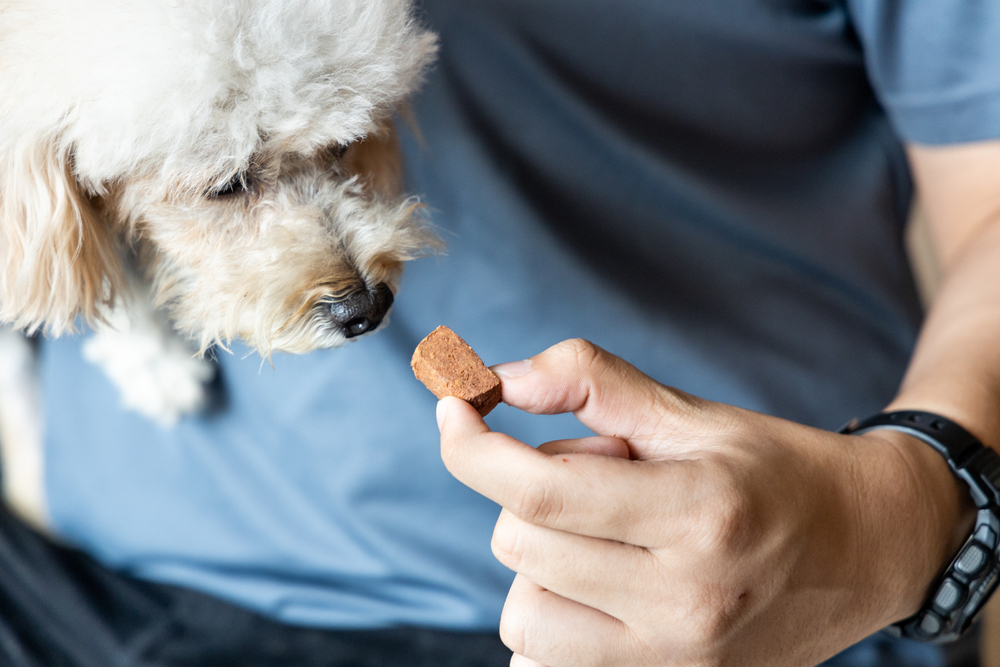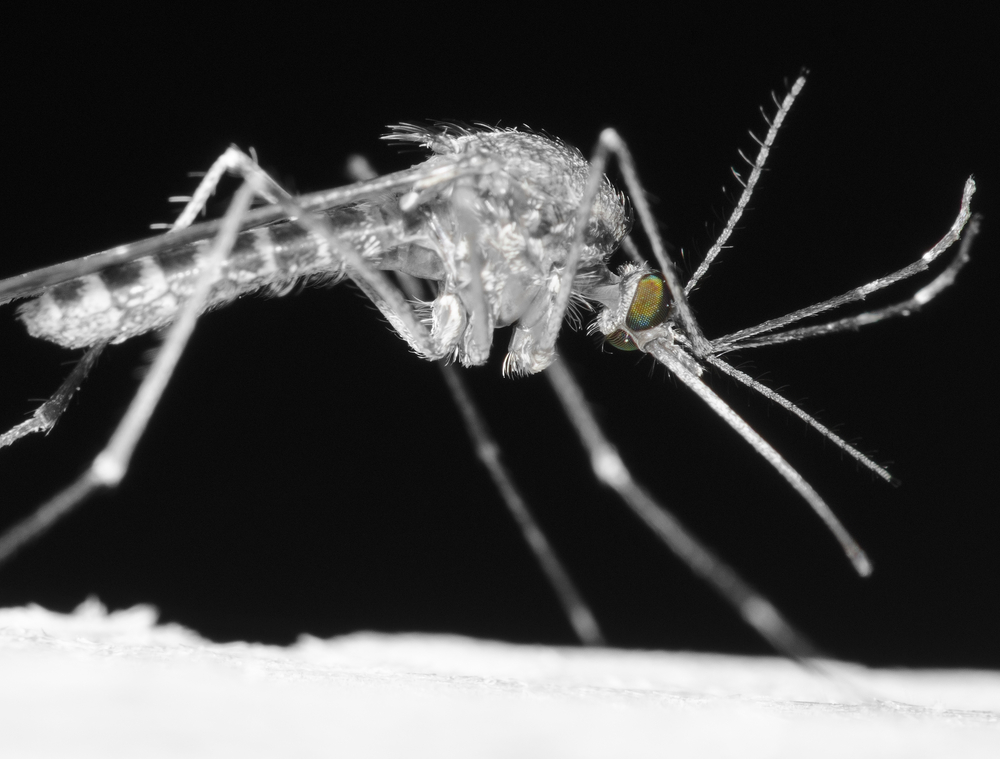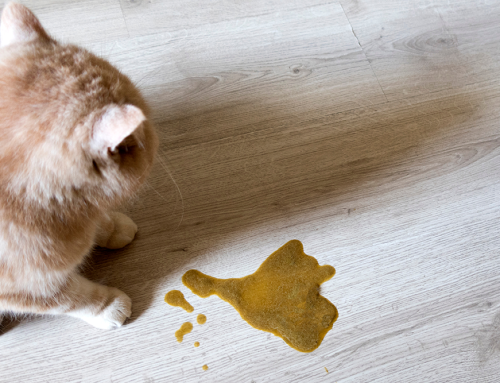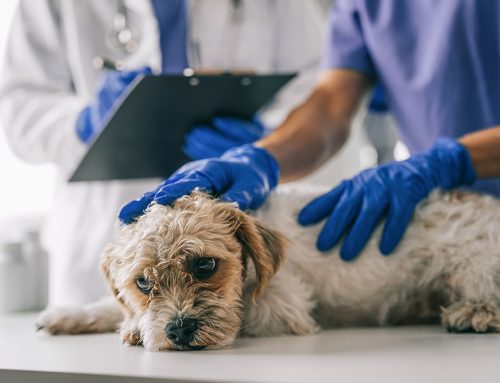That one annoying mosquito can cause more than an itchy bite. These pests transmit heartworm disease to pets, and while many pet owners provide heartworm prevention only in the summer months, these parasites can be problematic all year long. Our team at Wellness Animal Hospital wants to provide information about heartworm disease, and how you can safeguard your pet.
Heartworms are transmitted to pets
Heartworms thrive inside dogs and wild canids, such as coyotes, foxes, racoons, and wolves, and can grow to adulthood, mate, and produce offspring while inhabiting these animals. Microfilariae (i.e., baby heartworms) begin to circulate in the bloodstream of an infected animal about five to seven months after the heartworms enter their body. These microfilariae can then be ingested by a mosquito that takes a blood meal. Once inside the mosquito, the microfilariae mature in a few weeks to a stage that can infect your pet. The heartworm larvae migrate to the mosquito’s mouth parts, are deposited in the mosquito’s saliva, and enter your pet through the insect’s bite wound, ultimately causing infection.
Heartworms can damage your pet’s lungs
Dogs are natural heartworm hosts, while cats are atypical hosts. This means that the parasites affect pets differently.
- Dogs — When the larvae enter your dog, they eventually travel to their heart and pulmonary arteries, maturing along the way. Once the young worm finds a likely spot to call home, they can grow to around 12 inches. Your dog’s immune system recognizes the worm as foreign and attacks the parasite, causing inflammation throughout the pulmonary arteries and adjacent lung tissue. To add to this problem, most heartworms are infected by a bacterium, Wolbachia, which is released each time the heartworm molts to a new developmental stage, and contributes to the inflammatory process in the lung tissue. In addition, when the worms die, their bodies break apart and the pieces can become lodged in the lung vasculature, blocking blood flow to that lung area.
- Cats — Since cats are atypical hosts, the heartworm doesn’t usually mature to adulthood inside the cat, but the migrating larvae still cause significant problems. When the young heartworms reach the cat’s pulmonary vasculature, the cat’s immune system responds strongly, resulting in a condition called heartworm associated respiratory disease (HARD). This condition causes signs including coughing, wheezing, increased respiratory rate, and vomiting, and can be mistaken for feline asthma.
Heartworms cause damage to your pet’s heart
As their name implies, heartworms cause significant damage to your pet’s heart.
- Dogs — The damage by the heartworms in the pulmonary vasculature results in scarring and fibrosis in the vessels, which can make pumping blood through these areas difficult for the heart. Over time, the heart is unable to effectively pump blood throughout the body, leading to heart failure. Signs include exercise intolerance, a persistent, soft cough, and fluid accumulation in the abdomen or chest, as well as blood flow obstruction if a large number of worms populate the heart. This condition (i.e., caval syndrome) is fatal in most cases. Prompt surgical removal of the worms can save the dog’s life, but is not always successful.
- Cats — While most heartworm infections in cats don’t result in adult heartworms, this can sometimes occur. Adult heartworms in cats don’t grow as large as those found in infected dogs, and only one or two worms are typically present. However, because cats are so small, one or two adult worms take up enough space in their heart and pulmonary vasculature to cause a blood flow blockage and sudden death. In addition, the worms’ presence in the cat’s heart can cause turbulence, making blood clot formation more likely. If a clot lodges in the cat’s aorta where the vessel branches to supply blood to their hind limbs, they can experience sudden paralysis of one or both hind limbs.
Heartworms are hard to treat in pets
In the initial heartworm disease stages, most pets don’t show signs, and indications may not manifest until their heart and lungs are extensively damaged. The condition is treated differently in pets.
- Dogs — Infected dogs are strictly confined to reduce their activity levels, since exercise can cause the heartworms to further damage their heart and lungs. Once the dog’s condition is stabilized, an injection series is administered to kill the heartworms at their different life stages. This protocol must be performed in a controlled manner to cause as little inflammation as possible, since a severe reaction can be fatal. Antibiotics are also typically part of the treatment protocol to address the Wolbachia infection. The process typically takes at least two months.
- Cats — The Food and Drug Administration (FDA) has not approved a heartworm treatment for cats, and treatment focuses on minimizing the inflammation caused by the parasites, plus administering antibiotics to address the Wolbachia infection.
Heartworms are easy to prevent in pets

Providing year-round heartworm treatment to cats and dogs is an easy and safe way to ensure your pet is protected from these dangerous parasites. Some pet owners provide heartworm prevention only during the warmer months when mosquitoes are most active, but these medications should be given year-round. For instance, if an infected mosquito bites your pet in October, and you don’t administer heartworm medication in November, they can develop a heartworm infection. Numerous types of heartworm medications are available, and our team will be glad to help you determine the right application for your pet.
Ensure your pet receives year-round heartworm prevention to keep them safe from these harmful parasites. If your pet is due for a heartworm test, contact our team at Wellness Animal Hospital, so we can ensure their heart is free and clear of parasites.







Leave A Comment